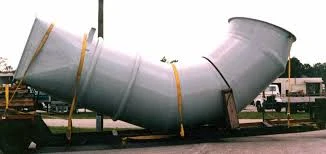
-
 Afrikaans
Afrikaans -
 Albanian
Albanian -
 Amharic
Amharic -
 Arabic
Arabic -
 Armenian
Armenian -
 Azerbaijani
Azerbaijani -
 Basque
Basque -
 Belarusian
Belarusian -
 Bengali
Bengali -
 Bosnian
Bosnian -
 Bulgarian
Bulgarian -
 Catalan
Catalan -
 Cebuano
Cebuano -
 China
China -
 China (Taiwan)
China (Taiwan) -
 Corsican
Corsican -
 Croatian
Croatian -
 Czech
Czech -
 Danish
Danish -
 Dutch
Dutch -
 English
English -
 Esperanto
Esperanto -
 Estonian
Estonian -
 Finnish
Finnish -
 French
French -
 Frisian
Frisian -
 Galician
Galician -
 Georgian
Georgian -
 German
German -
 Greek
Greek -
 Gujarati
Gujarati -
 Haitian Creole
Haitian Creole -
 hausa
hausa -
 hawaiian
hawaiian -
 Hebrew
Hebrew -
 Hindi
Hindi -
 Miao
Miao -
 Hungarian
Hungarian -
 Icelandic
Icelandic -
 igbo
igbo -
 Indonesian
Indonesian -
 irish
irish -
 Italian
Italian -
 Japanese
Japanese -
 Javanese
Javanese -
 Kannada
Kannada -
 kazakh
kazakh -
 Khmer
Khmer -
 Rwandese
Rwandese -
 Korean
Korean -
 Kurdish
Kurdish -
 Kyrgyz
Kyrgyz -
 Lao
Lao -
 Latin
Latin -
 Latvian
Latvian -
 Lithuanian
Lithuanian -
 Luxembourgish
Luxembourgish -
 Macedonian
Macedonian -
 Malgashi
Malgashi -
 Malay
Malay -
 Malayalam
Malayalam -
 Maltese
Maltese -
 Maori
Maori -
 Marathi
Marathi -
 Mongolian
Mongolian -
 Myanmar
Myanmar -
 Nepali
Nepali -
 Norwegian
Norwegian -
 Norwegian
Norwegian -
 Occitan
Occitan -
 Pashto
Pashto -
 Persian
Persian -
 Polish
Polish -
 Portuguese
Portuguese -
 Punjabi
Punjabi -
 Romanian
Romanian -
 Russian
Russian -
 Samoan
Samoan -
 Scottish Gaelic
Scottish Gaelic -
 Serbian
Serbian -
 Sesotho
Sesotho -
 Shona
Shona -
 Sindhi
Sindhi -
 Sinhala
Sinhala -
 Slovak
Slovak -
 Slovenian
Slovenian -
 Somali
Somali -
 Spanish
Spanish -
 Sundanese
Sundanese -
 Swahili
Swahili -
 Swedish
Swedish -
 Tagalog
Tagalog -
 Tajik
Tajik -
 Tamil
Tamil -
 Tatar
Tatar -
 Telugu
Telugu -
 Thai
Thai -
 Turkish
Turkish -
 Turkmen
Turkmen -
 Ukrainian
Ukrainian -
 Urdu
Urdu -
 Uighur
Uighur -
 Uzbek
Uzbek -
 Vietnamese
Vietnamese -
 Welsh
Welsh -
 Bantu
Bantu -
 Yiddish
Yiddish -
 Yoruba
Yoruba -
 Zulu
Zulu
grp demister
Understanding GRP Demisters An Essential Component in Fluid Systems
In industrial applications, the efficient separation of liquid droplets from gas streams is crucial for optimizing processes and ensuring environmental compliance. One of the most effective solutions for achieving this goal is the use of GRP (Glass Reinforced Plastic) demisters. These devices are designed to capture and remove moisture from gas streams, thereby improving the quality of the gas and protecting downstream equipment from damage caused by liquid accumulation.
What is a GRP Demister?
A GRP demister is typically a mist eliminator made of fiberglass-reinforced plastic (GRP), which combines the strength and durability of fiberglass with the corrosion resistance of plastic. This material makes GRP demisters particularly well-suited for harsh industrial environments where chemical exposure and temperature fluctuations are common. They are often employed in applications such as chemical processing, oil and gas production, and wastewater treatment.
How Do GRP Demisters Work?
The operation of a GRP demister relies on the principle of intercepting and coalescing liquid droplets from a gas stream. When the gas enters the demister, it encounters a series of closely spaced vapor channels designed to slow down the gas flow. As the gas moves through these channels, the inertia causes larger droplets to collide and coalesce. Once the droplets reach a certain size, they are heavy enough to overcome the upward gas flow and fall down into a collection trough or system.
One of the advantages of GRP demisters is their lightweight design, which makes installation easier and reduces structural support requirements. Additionally, the smooth surface of GRP minimizes the risk of fouling and clogging, ensuring efficient operation over extended periods.
grp demister

Benefits of Using GRP Demisters
The use of GRP demisters offers several benefits to industrial facilities. First and foremost, they enhance the overall efficiency of gas processing systems by preventing liquid carryover, which can disrupt operations and damage sensitive equipment. By ensuring that gas streams are dry, GRP demisters help maintain optimal process conditions and prolong the lifespan of downstream machinery.
Moreover, GRP demisters contribute to environmental protection. By effectively removing liquid droplets from exhaust gases, they reduce the risk of harmful emissions being released into the atmosphere. This is particularly important in industries subject to stringent environmental regulations, as compliance can prevent costly fines and help maintain a company's reputation.
Additionally, GRP demisters are cost-effective solutions. Their longevity and resistance to corrosion mean lower maintenance and replacement costs over time. Investing in high-quality GRP demisters can lead to significant savings in operational expenses, all while ensuring regulatory compliance and enhanced process efficiency.
Conclusion
In summary, GRP demisters are vital components in various industrial applications, playing a critical role in the efficient separation of liquid from gas streams. Their robust construction, ease of installation, and effectiveness in improving process efficiency make them a popular choice among engineers and facility managers. As industries continue to prioritize environmental responsibility and operational efficiency, the demand for advanced mist elimination solutions like GRP demisters is likely to grow, solidifying their place as an essential tool in modern fluid management systems.
Latest news
-
High-Pressure Fiberglass Pipe Flanges Durable & Lightweight SolutionsNewsMay.12,2025
-
Fiberglass Mining Equipment Durable & Corrosion-Resistant GRP SolutionsNewsMay.12,2025
-
FRP Pipe Saddles High-Strength, Corrosion-Resistant Pipe SupportsNewsMay.12,2025
-
ATI Radeon 38 Graphics High-Performance R38 GPU for Gaming & DesignNewsMay.11,2025
-
Fiberglass & FRP Trough Covers Durable Industrial Corrosion ProtectionNewsMay.11,2025
-
Durable FRP Chimney Construction & Installation for Industrial UseNewsMay.10,2025









